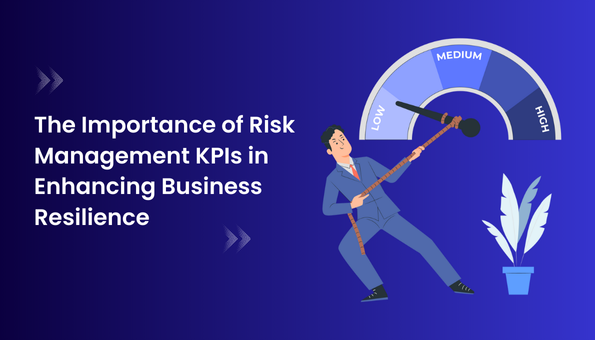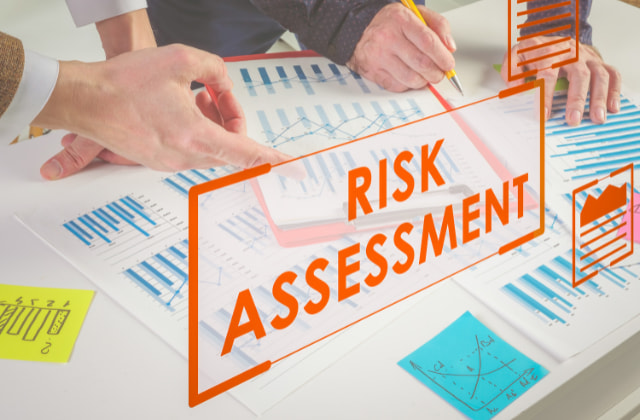The Influence of the Importance of Risk Management on Organizational Governance
The Influence of the Importance of Risk Management on Organizational Governance
Blog Article
The Important Importance of Risk Management in Achieving Organizational Goals
This is where Risk Management steps in, giving an organized method to determining, analyzing, and mitigating potential roadblocks to advance. As we check out the essential role of Risk Management in achieving organizational goals, one can't help but ask yourself: just how does this convert into real-world success?
Comprehending the Concept of Risk Management in Business

The Essential Function of Risk Management in Strategic Preparation
Incorporating Risk Management right into critical preparation acts as a safeguard for organizations, securing their long-term strategies with a solid structure of readiness and durability. Risk Management uses a structure for expecting uncertainties and designing ideal reactions, making sure the company's survival and success also in the face of difficulty. By including Risk Management right into critical planning, organizations can change these uncertainties right into possibilities for growth and innovation.

Techniques for Identifying, Assessing, and Focusing On Risks
Navigating the facility landscape of threats needs the application of details techniques for their assessment, identification, and prioritization. The process starts with Risk identification, utilizing tools such as SWOT evaluation, which helps in pinpointing prospective risks and chances. Next off, Risk analysis is carried out to ascertain the potential effect and chance of each Risk. Tools such as Risk matrices and impact-probability graphes are made use of for this. Risks are focused on based on their potential influence and probability, allowing organizations to focus their resources on high-priority dangers. This methodical strategy guarantees a detailed understanding of the Risk landscape, enabling companies to make educated choices and successfully manage risks to accomplish their goals - importance of risk management.
Protecting Business Procedures With Effective Risk Management
In business landscape fraught with uncertainties, effective Risk Management plays a pivotal role in protecting organizational operations. It serves as a safety guard, minimizing the adverse impacts of prospective risks and making sure the smooth performance of all procedures. By determining and analyzing potential risks, Risk Management allows organizations to establish durable backup plans. This preventive strategy aids in preserving functional security, also when challenged with unforeseen circumstances. Fundamentally, Risk Management is the lifeline that keeps the organizational procedures afloat in the middle of turbulent waters. It ensures not just the survival but the sustainable growth of a company, making it an important tool in attaining business objectives. Hence, organizations should purchase extensive Risk Management techniques to guard their operations.

Transforming Potential Threats to Opportunities: The Power of Risk Management
While possible hazards may at first appear as obstructions to organizational success, reliable Risk Management can transform them right into possibilities. An aggressive strategy to take the chance his explanation of Management includes identifying, analyzing, and prioritizing threats to design strategies that turn them into possible benefits. This procedure necessitates the development of a risk-aware culture within the organization, motivating people to see dangers as possible stimulants for change and development, rather than plain hazards. importance of risk management. Via this lens, possible threats end up being possibilities to introduce, improve processes, and enhance resilience. Hence, by leveraging the power of Risk Management, companies can not only safeguard their procedures however additionally stimulate development and attain their goals in an unforeseeable business setting.
Instance Researches: Success Stories of Risk Management Driving Organization Objectives
Successful application of Risk Management strategies has actually produced excellent outcomes in numerous services, underscoring the advantages of this her response strategy. International business like Microsoft and Google, for circumstances, have leveraged Risk Management to decrease threats and manipulate chances, driving their service goals forward. These examples illustrate exactly how successful Risk Management can not only steer businesses clear of possible risks however likewise guide them towards their tactical hop over to these guys purposes.
Conclusion
In verdict, Risk Management is essentially important in accomplishing business goals. It supplies an organized strategy to identifying, analyzing, and dealing with prospective dangers and opportunities. Even more than simply mitigating threats, it additionally promotes technology, durability, and lasting growth. By incorporating Risk Management into critical planning, companies can much better navigate uncertainties, secure procedures, and capitalise on opportunities, consequently lining up with lasting goals.
At its core, Risk Management is the process of identifying, analyzing, and attending to possible threats that could adversely affect a company's operations or objectives. Next, Risk assessment is conducted to ascertain the prospective effect and possibility of each Risk. Risks are prioritized based on their prospective effect and probability, enabling organizations to focus their resources on high-priority threats. By determining and assessing prospective threats, Risk Management makes it possible for organizations to develop robust backup plans. A proactive technique to take the chance of Management includes determining, examining, and focusing on dangers to develop techniques that transform them right into prospective benefits.
Report this page